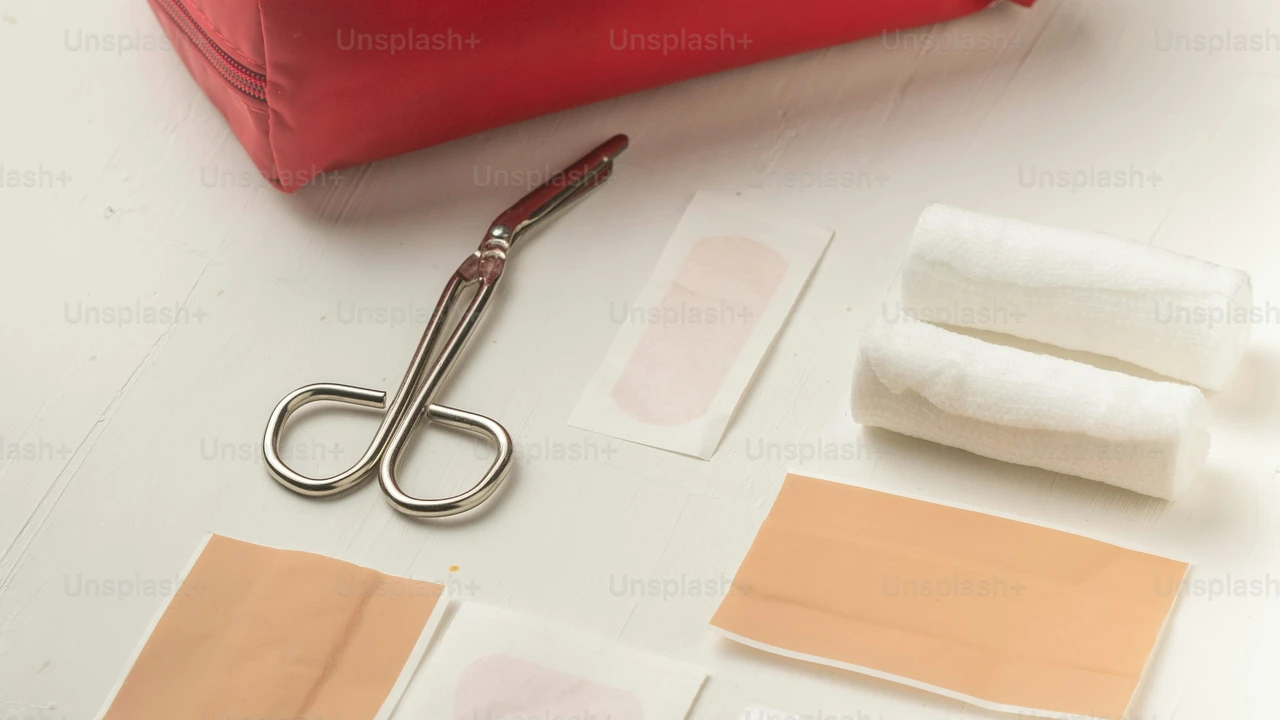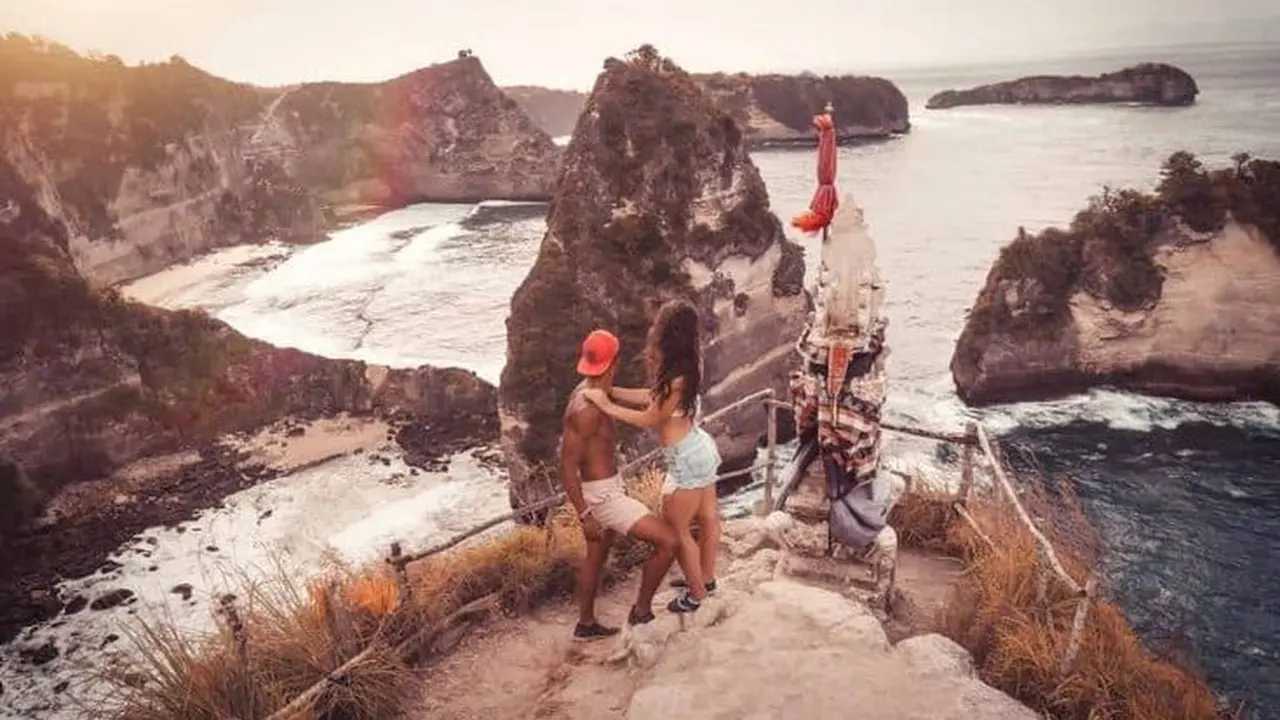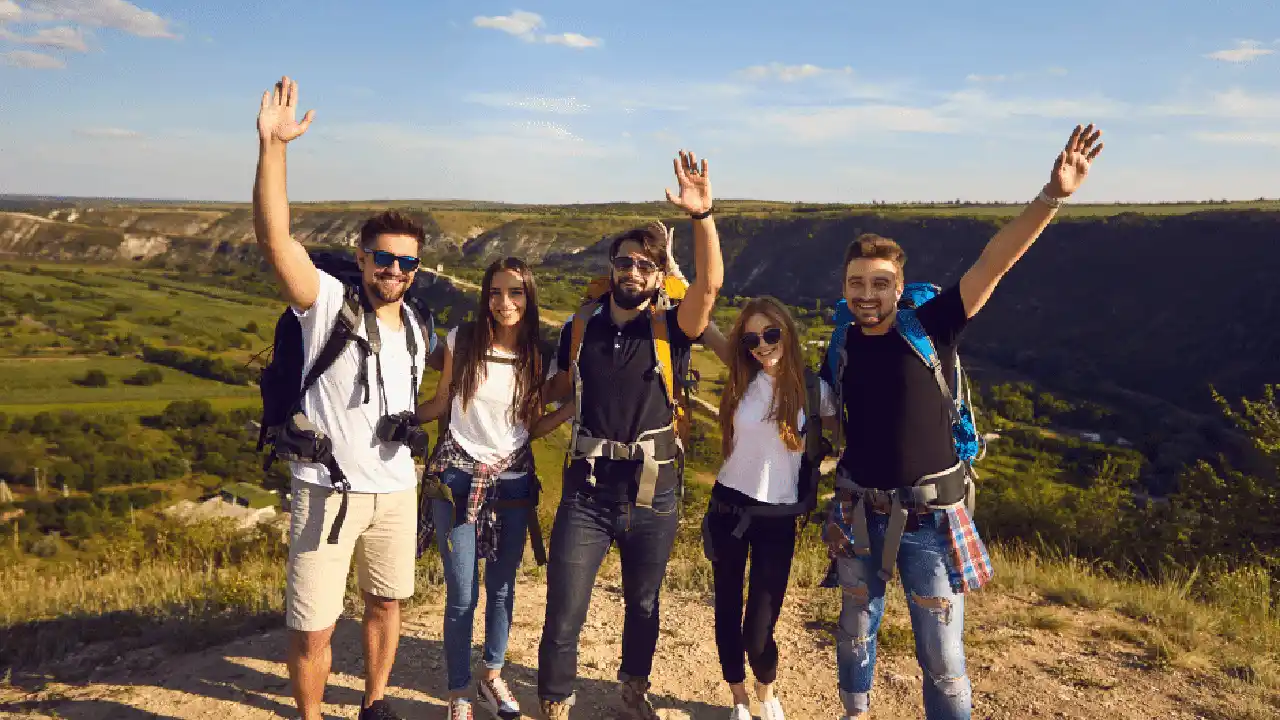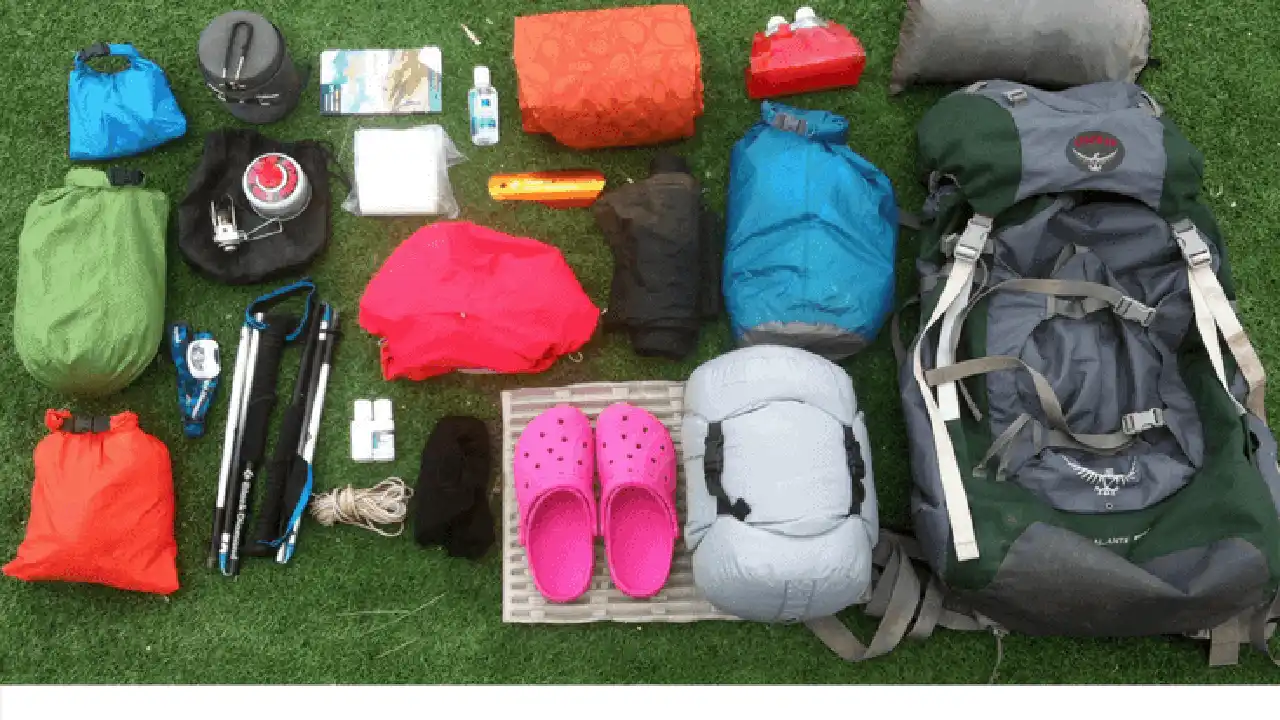Backpacking First Aid Kits_ Essentials
Essential components of a backpacking first aid kit. Learn what to pack for common injuries and illnesses on the trail. Be prepared for emergencies with our comprehensive guide.

Backpacking First Aid Kit: Why It's Crucial
Okay, let's talk about something super important: your backpacking first aid kit. Think of it as your safety net when you're miles from civilization. A well-stocked kit can turn a minor inconvenience into a manageable situation, and in some cases, it could even save your life. You're out there enjoying nature, pushing your limits, but accidents happen. A twisted ankle, a nasty cut, or even just a headache can quickly derail your trip if you're not prepared. That's where your first aid kit comes in.
Essential First Aid Kit Components for Backpacking Adventures
So, what should you actually *put* in this life-saving kit? Here’s a breakdown of the essentials:
- Wound Care: This is your first line of defense against cuts, scrapes, and blisters.
- Pain Relief: Because let's face it, backpacking can be tough on the body.
- Medications: Any personal medications you need, plus some common over-the-counter remedies.
- Tools & Supplies: These are the things that help you use everything else in your kit effectively.
- Extras: These are often overlooked but can make a big difference in your comfort and safety.
Wound Care Essentials for Backpacking First Aid
Let's dive deeper into wound care. This is probably the most frequently used part of your kit.
- Adhesive Bandages: A variety of sizes is key. Get a mix of small, medium, and large bandages to cover different types of wounds. Consider waterproof bandages, especially if you’re hiking in wet conditions. Brands like Band-Aid and Curad offer good waterproof options.
- Gauze Pads: These are essential for cleaning and covering larger wounds. Sterile gauze pads in various sizes (2x2, 4x4) are a must.
- Medical Tape: To secure gauze pads or create makeshift bandages. Look for hypoallergenic tape to avoid skin irritation. 3M Micropore tape is a popular choice.
- Antiseptic Wipes: To clean wounds and prevent infection. Individually wrapped antiseptic wipes are convenient and lightweight. Look for wipes containing benzalkonium chloride or alcohol.
- Triple Antibiotic Ointment: To prevent infection in minor cuts and scrapes. Neosporin is a well-known brand, but generic versions work just as well.
- Blister Treatment: Blisters are a backpacker's worst enemy. Moleskin or blister pads are essential for preventing and treating blisters. Cut the moleskin to the size and shape of the blister and apply it directly to the skin. Compeed blister cushions are also a good option.
Pain Relief Medications for Backpacking Trips
Backpacking can be physically demanding, so pain relief is crucial.
- Ibuprofen or Acetaminophen: For pain relief and reducing inflammation. Ibuprofen (Advil, Motrin) is good for muscle aches and inflammation, while acetaminophen (Tylenol) is better for headaches and fever.
- Antihistamine: For allergic reactions to insect bites or plants. Diphenhydramine (Benadryl) is a common antihistamine, but it can cause drowsiness. Loratadine (Claritin) or cetirizine (Zyrtec) are non-drowsy options.
Personal and Essential Medications for Backpackers
Don't forget your personal medications and some other helpful remedies.
- Personal Medications: If you have any pre-existing medical conditions, be sure to pack enough of your prescription medications to last the entire trip, plus a few extra days in case of delays.
- Antidiarrheal Medication: Traveler's diarrhea is a common problem. Loperamide (Imodium) can help control diarrhea.
- Motion Sickness Medication: If you're prone to motion sickness, pack some Dramamine or ginger chews.
Essential Tools and Supplies for Your Backpacking First Aid
These tools will help you administer first aid effectively.
- Tweezers: For removing splinters, ticks, and other debris from wounds.
- Small Scissors: For cutting tape, gauze, and clothing.
- Safety Pins: For securing bandages or repairing gear.
- Disposable Gloves: To protect yourself from infection when treating wounds.
- CPR Mask: If you're trained in CPR, a CPR mask can protect you from infection while performing rescue breaths.
- Emergency Blanket: Lightweight and compact, an emergency blanket can help prevent hypothermia in cold weather.
- First Aid Manual: A small first aid manual can provide valuable information on how to treat various injuries and illnesses.
Often Overlooked Extras for Backpacking First Aid Kits
These extras can make a big difference in your comfort and safety.
- Sunscreen: Protect your skin from sunburn. Choose a broad-spectrum sunscreen with an SPF of 30 or higher.
- Insect Repellent: Protect yourself from insect bites. Look for insect repellent containing DEET or picaridin.
- Lip Balm: Prevent chapped lips. Choose a lip balm with SPF protection.
- Hand Sanitizer: Keep your hands clean.
- Electrolyte Tablets: Replenish electrolytes lost through sweat.
Building Your Backpacking First Aid Kit: Pre-Made vs DIY
You have two main options: buy a pre-made kit or build your own. Both have pros and cons.
Pre-Made Kits:
- Pros: Convenient, readily available, often cheaper than buying individual items.
- Cons: May not contain everything you need, may contain items you don't need, quality of components may be lower.
DIY Kits:
- Pros: Customizable to your specific needs, higher quality components, you know exactly what's in it.
- Cons: More expensive than pre-made kits, requires more time and effort to assemble.
Recommended Pre-Made First Aid Kits for Backpacking
If you opt for a pre-made kit, here are a few good options:
- Adventure Medical Kits Ultralight Watertight .7 Medical Kit: A lightweight and compact kit designed for solo backpackers. It includes essential wound care supplies, pain relievers, and medications. Price: around $30.
- Adventure Medical Kits Day Tripper Medical Kit: A more comprehensive kit suitable for day hikes and short backpacking trips. It includes more wound care supplies and medications than the Ultralight Watertight kit. Price: around $40.
- Coleman All Purpose Mini First Aid Kit: A basic and affordable kit suitable for minor injuries. It includes essential wound care supplies and pain relievers. Price: around $10.
DIY First Aid Kit: Building Your Own
If you prefer to build your own kit, here's a suggested list of items:
- Adhesive bandages (various sizes)
- Gauze pads (various sizes)
- Medical tape
- Antiseptic wipes
- Triple antibiotic ointment
- Moleskin or blister pads
- Ibuprofen or acetaminophen
- Antihistamine
- Personal medications
- Antidiarrheal medication
- Tweezers
- Small scissors
- Safety pins
- Disposable gloves
- CPR mask (optional)
- Emergency blanket
- First aid manual
- Sunscreen
- Insect repellent
- Lip balm
- Hand sanitizer
- Electrolyte tablets
First Aid Kit Container: Choosing the Right One
The container you use to store your first aid kit is just as important as the contents. It should be:
- Durable: Able to withstand the rigors of backpacking.
- Waterproof or Water-Resistant: To protect the contents from moisture.
- Lightweight: To minimize pack weight.
- Organized: With compartments or dividers to keep items separate and easy to find.
Some good container options include:
- Dry Bags: Waterproof and lightweight, dry bags are a great option for protecting your first aid kit from moisture. Sea to Summit Lightweight Dry Sacks are a popular choice.
- Ziploc Bags: A simple and affordable option for organizing items within your kit.
- Hard-Sided Cases: Durable and protective, hard-sided cases are a good option for longer trips or more rugged terrain. Pelican Micro Cases are a popular choice.
Using Your Backpacking First Aid Kit: Basic Knowledge
Having a first aid kit is only half the battle. You also need to know how to use it. Consider taking a basic first aid course to learn how to treat common injuries and illnesses. Here are a few basic tips:
- Clean wounds thoroughly: Use antiseptic wipes or soap and water to clean wounds before applying bandages.
- Apply pressure to stop bleeding: Use a gauze pad and apply direct pressure to the wound until the bleeding stops.
- Elevate injuries: Elevate injured limbs to reduce swelling.
- Stay hydrated: Drink plenty of water to prevent dehydration.
- Know your limits: If you're not comfortable treating a particular injury or illness, seek professional medical help.
Backpacking First Aid Kit: Weight Considerations
Every ounce counts when you're backpacking. Try to minimize the weight of your first aid kit by choosing lightweight components and only packing what you need. Here are a few tips:
- Choose lightweight containers: Use dry bags or Ziploc bags instead of heavy hard-sided cases.
- Buy travel-sized medications: Opt for travel-sized bottles of medications to save weight.
- Remove unnecessary packaging: Remove items from their bulky packaging to save space and weight.
- Share with your hiking partners: If you're hiking with a group, you can share some of the heavier items, such as the first aid manual or emergency blanket.
Maintaining Your Backpacking First Aid Kit
Your first aid kit is an investment in your safety, so it's important to maintain it properly. Here are a few tips:
- Check the expiration dates of medications: Replace any expired medications.
- Restock used items: Replenish any items that you've used.
- Inspect the kit regularly: Check for damage or wear and tear.
- Store the kit in a cool, dry place: To prevent damage to the contents.
First Aid Kit Scenarios: Real-World Examples
Let's look at some common scenarios and how your first aid kit can help:
- Scenario 1: Twisted Ankle: Use an elastic bandage to compress the ankle, elevate the leg, and take ibuprofen for pain relief.
- Scenario 2: Cut on the Leg: Clean the wound with antiseptic wipes, apply triple antibiotic ointment, and cover with a bandage.
- Scenario 3: Headache: Take acetaminophen or ibuprofen for pain relief and stay hydrated.
- Scenario 4: Blisters: Apply moleskin or blister pads to protect the blisters and prevent further irritation.
First Aid Kit for Specific Environments: Desert vs Mountain
The contents of your first aid kit may need to be adjusted depending on the environment you're backpacking in.
- Desert Backpacking: Pack extra sunscreen, lip balm, and electrolyte tablets to protect yourself from the sun and heat.
- Mountain Backpacking: Pack extra layers of clothing, an emergency blanket, and a first aid manual with information on treating altitude sickness.
Advanced First Aid Skills: When to Seek Help
While a first aid kit can help you manage minor injuries and illnesses, it's important to know when to seek professional medical help. Here are a few situations where you should evacuate and seek medical attention:
- Severe injuries: Such as broken bones, deep cuts, or head injuries.
- Serious illnesses: Such as difficulty breathing, chest pain, or severe abdominal pain.
- Signs of infection: Such as fever, pus, or redness around a wound.
- Unconsciousness: Any loss of consciousness, even for a brief period.
Backpacking First Aid: A Final Thought
Your backpacking first aid kit is more than just a collection of supplies; it's a crucial part of your safety plan. By packing a well-stocked kit and knowing how to use it, you can be prepared for unexpected injuries and illnesses and enjoy your backpacking adventures with peace of mind. Remember to customize your kit to your specific needs and environment, and always prioritize safety. Happy trails!
:max_bytes(150000):strip_icc()/277019-baked-pork-chops-with-cream-of-mushroom-soup-DDMFS-beauty-4x3-BG-7505-5762b731cf30447d9cbbbbbf387beafa.jpg)





